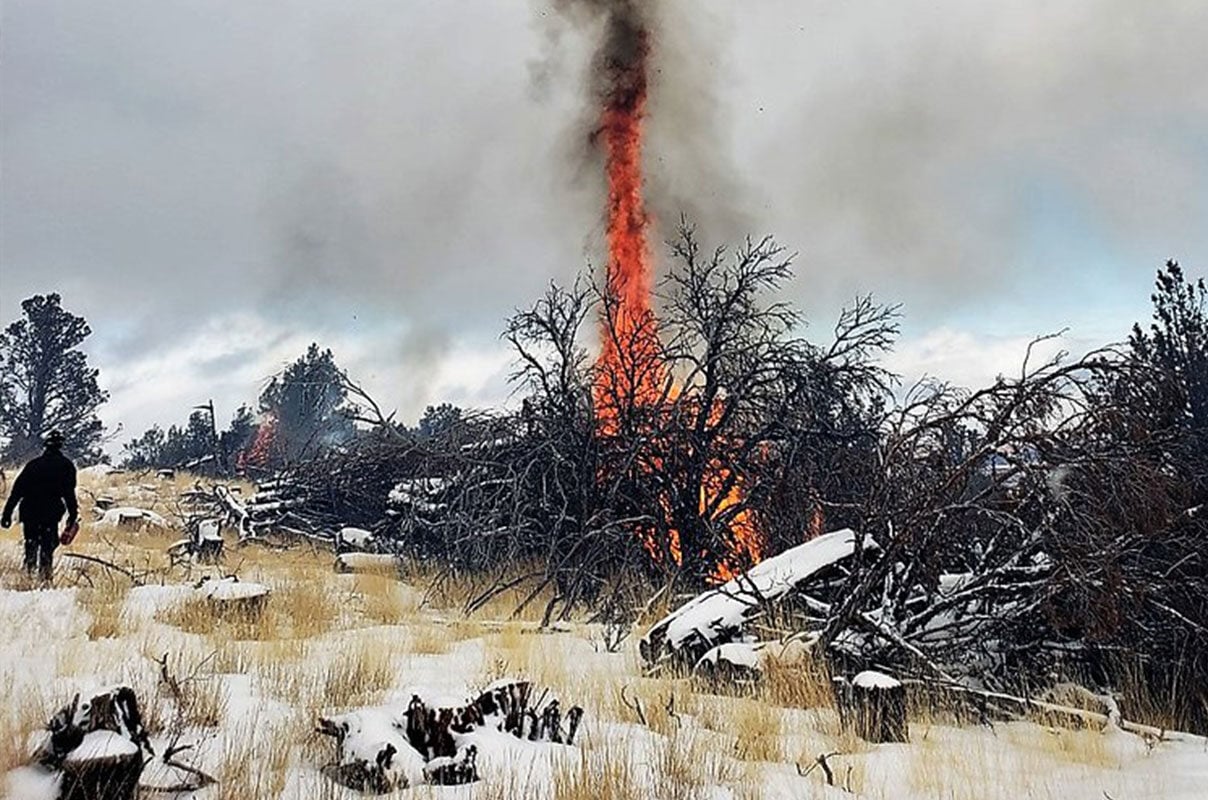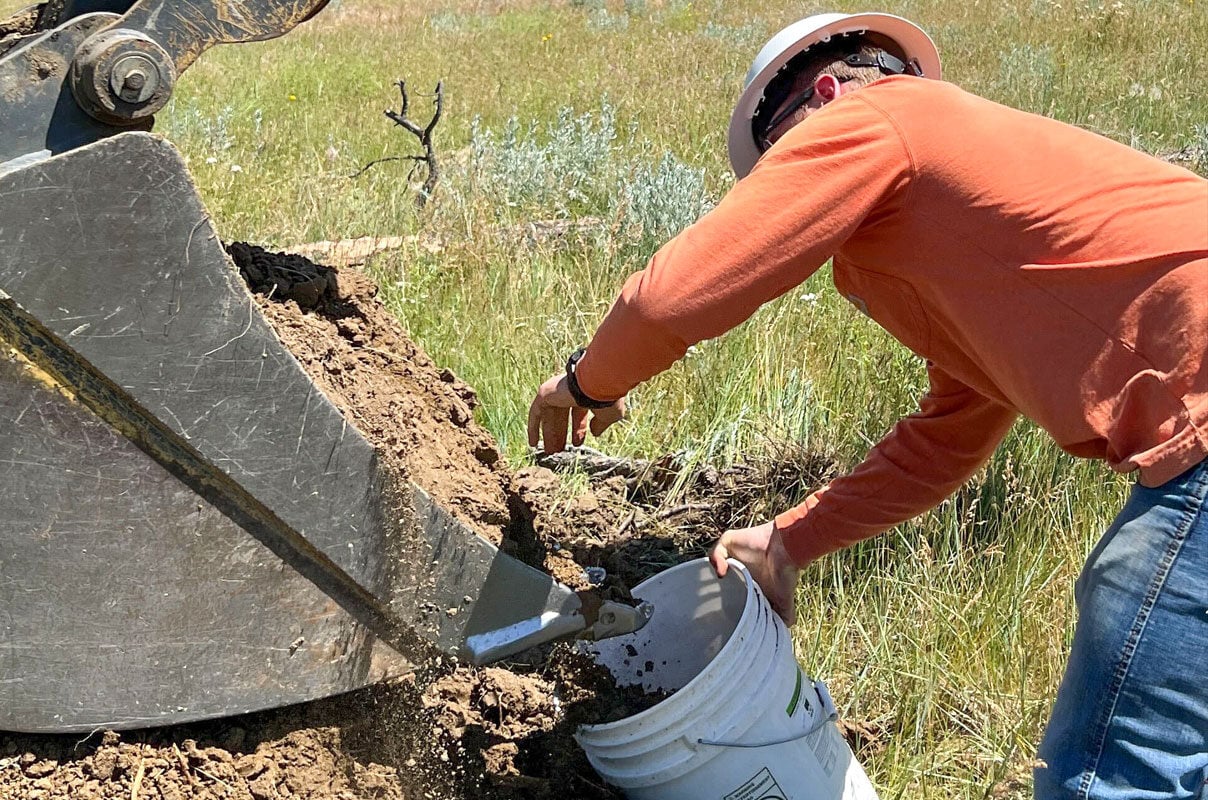PROJECT
Mast Wood Preserve MT1
Central Montana
About the Project
This is a market-first opportunity in restorative carbon removal combining biomass burial with reforestation. Credits generated through the onsite burial of unmerchantable trees destroyed by severe wildfire (biomass) will be available for 2026 retirement, while also supporting up to 900 acres of climate-resilient, ecological restoration that further contributes to non-monetized carbon sequestration.
Mast is working with a family landowner outside of Billings, Montana to restore areas impacted by the July 2021 Poverty Flats Fire. Dead trees are a ready wildfire fuel source. To reduce this risk, as landowners traditionally do and the state of Montana recommends,* salvage operations initially stockpiled many of these dead trees for burning.
The site is protected under a 100-year easement with rigorous monitoring, reporting, and verification requirements. The geotechnically designed, anoxic (oxygen-limited) ‘chamber’ halts the decomposition of the buried wood, preventing the release of carbon dioxide. Research and modeling indicates preservation for as long as 3,000 years. Mast's conservative crediting with Puro.earth ensures appropriate baseline, additionality, leakage, and operational emissions are addressed.
What is the scale beyond this project?
Montana alone contains 2.3 million tonnes of trees killed from wildfires in the last four years. Wildfires continue to outpace traditional reforestation capacity and funding.
Without Mast, and your catalytic carbon investment, it would take 50 years to restore what has already been lost across the West. We are permanently removing this tonnage from the atmospheric carbon cycle and bringing these ecosystems back to life. We invite you to join us.
*Montana Forestry Best Management Practices (Montana DNRC BMP) lists slash pile burning as a suggested approach to biomass management and the Control of Timber Slash and Debris law requires logging slash to be reduced, where burning slash piles is the most cost-effective (business as usual) practice.

Fall 2024
The aftermath of the 2021 Poverty Flats Fire, where high-severity burns decimated the Ponderosa pine forest, leaving behind a vast amount of dead, unusable timber.

Fall 2024
High-severity burns killed more than 60% of this family's ponderosa pine forest, leaving a significant volume of woody, burnt “biomass” that would fuel future fires if not addressed–much like old campfire logs.

Planning
A test pit is dug at the project site. Mast is creating a geotechnically designed, anoxic chamber to bury the dead trees, preventing decomposition and locking away carbon for centuries.

Spring 2024
The Mast Aerial and GIS teams have extensively surveyed the project landscape. Hundreds of miles from facilities that could repurpose this volume of burned wood for lumber, biochar, or energy production, onsite burial is the most efficient carbon sequestration pathway.
Protective easement
100 years
Acres of potential restoration
900
Regional Impacts and Co-benefits

Healthy Soil
Wood Preserve MT 1 goes beyond simply storing carbon; it actively protects and enhances soil health. By preventing the common practice of burning dead trees after wildfires, the project safeguards essential nutrients and vital organic matter within the soil. Burning releases these valuable components into the atmosphere, diminishing soil fertility and hindering long-term ecosystem recovery.

Biodiversity
While carbon removal is a primary objective, this project delivers significant benefits for local biodiversity. Re-planting native ponderosa pine and deciduous species and shrubs recreates a mosaic of native habitats appropriate for this ecosystem. The project's commitment to long-term land protection, achieved through an easements and dedicated reforestation efforts restores crucial habitat for a wide range of native plant and animal species.

Stewardship and Jobs
Mast recognizes that environmental stewardship and economic vitality are interconnected. By prioritizing local partnerships and employing Montana-based contractors for essential tasks like excavation, log transport, tree planting, and ongoing site monitoring, the project directly invests in the economic well-being of the surrounding communities.
Invest in American forests and achieve climate goals.
Restorative carbon credits. Responsible business.